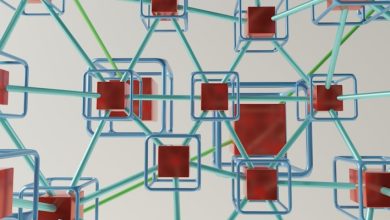How Web3 is Redefining the Internet

- Understanding the Basics of Web3 Technology
- The Rise of Decentralized Applications (DApps)
- Exploring the Role of Blockchain in Web3
- Challenges and Opportunities in the Web3 Ecosystem
- Impact of Web3 on Data Privacy and Security
- The Future of Web3: What to Expect
Understanding the Basics of Web3 Technology
Web3 technology is revolutionizing the way we interact with the internet. Unlike its predecessor, Web2, which was primarily controlled by centralized entities, Web3 is built on decentralized networks that prioritize user privacy and data ownership. This shift towards decentralization has significant implications for the future of the internet and how we engage with online platforms.
One of the key components of Web3 technology is blockchain, a distributed ledger that records transactions across a network of computers. By leveraging blockchain technology, Web3 applications can operate without the need for intermediaries, allowing for more secure and transparent transactions. This decentralization also means that users have more control over their data and digital assets, reducing the risk of censorship or manipulation by centralized authorities.
Smart contracts are another essential aspect of Web3 technology. These self-executing contracts are stored on the blockchain and automatically enforce the terms of an agreement when certain conditions are met. Smart contracts have the potential to revolutionize industries such as finance, real estate, and supply chain management by streamlining processes and reducing the need for intermediaries.
In addition to blockchain and smart contracts, Web3 technology also encompasses decentralized applications (dApps). These applications run on a peer-to-peer network of computers, eliminating the need for centralized servers. This decentralized architecture makes dApps more resilient to censorship and hacking, enhancing user privacy and security.
Overall, Web3 technology represents a paradigm shift in how we use the internet, moving towards a more decentralized, transparent, and user-centric online experience. As we continue to explore the possibilities of Web3, it is essential to understand the basics of this technology and how it is redefining the internet as we know it.
The Rise of Decentralized Applications (DApps)
The rise of decentralized applications (DApps) marks a significant shift in how the internet functions. DApps are built on blockchain technology, which allows for greater transparency, security, and immutability compared to traditional centralized applications. This new decentralized approach empowers users by giving them more control over their data and digital assets.
DApps operate on a peer-to-peer network rather than being controlled by a single entity, making them resistant to censorship and manipulation. This decentralized nature also means that DApps are more resilient to cyber attacks, as there is no central point of failure. With the growing concerns around data privacy and security, DApps offer a compelling alternative to traditional web applications.
The rise of DApps is reshaping the internet landscape, giving rise to a more democratized and inclusive online ecosystem. By leveraging blockchain technology, DApps are able to facilitate trustless transactions and interactions, opening up new possibilities for peer-to-peer collaboration and innovation. As more developers and users embrace this decentralized paradigm, the potential for DApps to disrupt traditional industries and business models continues to grow.
In conclusion, the rise of decentralized applications represents a fundamental shift in how we interact with the internet. By embracing the principles of decentralization, transparency, and security, DApps are paving the way for a more user-centric and resilient online environment. As we continue to explore the possibilities of Web3, DApps are poised to play a central role in redefining the future of the internet.
Exploring the Role of Blockchain in Web3
Blockchain technology plays a crucial role in Web3, redefining how the internet operates. By utilizing decentralized networks, blockchain ensures transparency and security in transactions and data sharing. This revolutionary technology enables users to interact directly without the need for intermediaries, promoting trust and efficiency in online interactions.
One of the key aspects of blockchain in Web3 is its ability to create smart contracts. These self-executing contracts automatically enforce the terms of an agreement, eliminating the need for third-party oversight. This innovation streamlines processes and reduces costs, making transactions more seamless and reliable.
Another important function of blockchain in Web3 is the concept of digital ownership. Through blockchain-powered platforms, users can securely own and transfer digital assets such as cryptocurrencies, digital art, or even virtual real estate. This ownership is recorded on the blockchain, ensuring authenticity and preventing fraud.
Moreover, blockchain technology enhances data privacy in Web3 by giving users more control over their personal information. With blockchain, individuals can choose what data to share and with whom, reducing the risk of data breaches and unauthorized access. This increased privacy empowers users to engage more freely in online activities without compromising their security.
In conclusion, blockchain is a foundational technology in the development of Web3, offering unprecedented opportunities for decentralization, security, and ownership in the digital realm. As the internet continues to evolve, blockchain will play an increasingly vital role in shaping the future of online interactions and transactions.
Challenges and Opportunities in the Web3 Ecosystem
One of the key aspects of the Web3 ecosystem is the myriad challenges and opportunities it presents. As with any technological shift, there are hurdles to overcome and new possibilities to explore.
One of the main challenges in the Web3 space is the issue of scalability. As more users and applications come online, the infrastructure must be able to handle the increased demand. This requires innovative solutions to ensure that the network can support the growing ecosystem.
Another challenge is interoperability between different blockchains. Currently, there are numerous blockchain platforms, each with its own unique features and capabilities. Finding ways to connect these disparate systems will be crucial for the future of Web3.
Despite these challenges, there are also numerous opportunities in the Web3 ecosystem. For example, decentralized finance (DeFi) has exploded in popularity, offering new ways to access financial services without traditional intermediaries. This has the potential to democratize finance and empower individuals around the world.
Additionally, non-fungible tokens (NFTs) have opened up new avenues for digital ownership and creativity. Artists, musicians, and other creators can now tokenize their work and connect directly with their audience, bypassing traditional gatekeepers.
Impact of Web3 on Data Privacy and Security
The introduction of Web3 is significantly impacting data privacy and security on the internet. With the decentralization of data storage and transactions, users have more control over their personal information. This shift towards a more secure and private online experience is reshaping the way we interact with the digital world.
One of the key advantages of Web3 is its use of blockchain technology, which provides a transparent and tamper-proof way of storing data. This not only enhances security but also reduces the risk of data breaches and cyber attacks. By utilizing smart contracts, users can securely exchange data without the need for intermediaries, further protecting their privacy.
Moreover, Web3 enables users to have ownership of their data, allowing them to decide who can access it and for what purpose. This puts an end to the current model where tech companies harvest and monetize user data without their consent. With Web3, individuals have the power to monetize their own data or choose to keep it private.
Overall, the impact of Web3 on data privacy and security is profound. It empowers users to take control of their online presence, ensuring that their personal information is kept safe and secure. As we continue to embrace this new era of the internet, the focus on privacy and security will only become more prevalent, creating a more trustworthy and user-centric digital environment.
The Future of Web3: What to Expect
As Web3 continues to evolve, we can expect to see a shift towards a more decentralized and user-centric internet experience. This new paradigm will bring about greater privacy, security, and control for users over their data and online interactions. With blockchain technology at its core, Web3 will enable peer-to-peer transactions and interactions without the need for intermediaries.
One of the key features of Web3 is the concept of self-sovereign identity, where users have full ownership and control over their digital identities. This will lead to a more secure and trustless online environment, where users can transact and interact with confidence.
Another aspect of Web3 that we can expect to see is the rise of decentralized applications (dApps) that operate on blockchain networks. These dApps will offer new ways for users to engage with content, services, and each other, without relying on centralized platforms.
Overall, the future of Web3 looks promising, with the potential to revolutionize the way we use the internet. By embracing decentralization, self-sovereign identity, and dApps, we can look forward to a more secure, private, and user-centric online experience.



